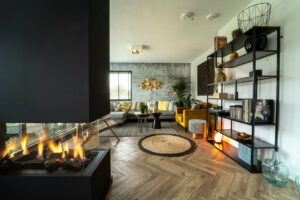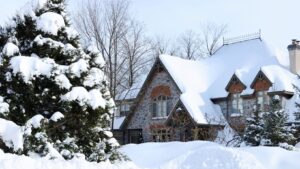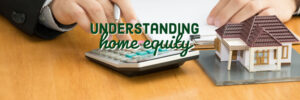As a crucial part of being able to toast marshmallows, a good fire is important.
Knowing a few things about the different types of firewood can maximise efficiency and save you trouble when it comes to your wood stove, fireplace or fire pit.
Not all firewood gives the same results so understanding the characteristics of different types is key to choosing the best firewood for your needs.
Firewood has two categories: hardwood and softwood, but don’t let the names fool you! Hardwoods aren’t always harder or more durable and softwoods aren’t soft and workable—give or take a few exceptions.
The short version of the story goes like this, hardwoods are generally denser than softwood meaning they burn for longer and produce more heat. They are also less sticky than softwoods and are less likely to cause tar deposit buildups in your flue.
To get a better idea of the benefits and features of both hardwoods and softwoods we’re going to break down each category with more details.
So let’s take a look at which is the best firewood for different types of fireplaces.
Hardwood
Most hardwood trees are slow growing, making them much denser than softwoods, they’re darker in color, burn more slowly and are best for cooking and producing fires which are hotter and more intense.
What they’re great for: Long, lingering fires with lots of coals, heating your house and fueling your stove. Hardwood is generally the best wood for your fireplace.
Popular Types of Hardwood For Burning:
The list of different types of hardwood could go on and on forever, so we will focus on just three of the most popular:
Oak
A favorite because it can be found almost anywhere, oak is very dense and can burn for a long, long time. It’s the slowest timber to season and is best used in a mix of different types of logs. It’s great if you need to keep a fire going at night.
Birch
A great option for fires thanks to its ability to burn quickly and well, even unseasoned. There are many species of Birch (like Black, Yellow, and White) with varying degrees of efficiency. Its bark can also be used as a natural fire starter. It works best mixed in with slow-burning woods like Oak.
Ash
A favorite for wood burning because it burns well on its own, produces a steady flame, and has a good heat output.
Softwood
Softwoods typically season much more quickly than hardwoods and are lighter and lower in density. They ignite faster than hardwoods and emit more smoke, making them better for outside use.
What they’re great for: Perfect for kindling, campfires, or anything outdoors.
Popular Types of Softwood for Burning: When it comes to softwood the options may not be as plentiful as hardwoods, but there are some great choices. Especially if you’re looking for a wood with a lower heat output:
Cedar
Small pieces can be burned unseasoned and generally give off a pleasant smell. Cedar will give you a nice, lasting heat with little flame and a strong crackling sound.
Pine
Lights easily and burns fast with a good flame, but will need to be refueled more often. An excellent fire starter, but should only be used outdoors as it has a high sap and resin content. A good option to mix in with other firewood.
Larch
The hardest of all softwoods and actually harder than some hardwoods, larch must be seasoned well and will burn very hot. Perfect to mix in with hardwoods and good for stoves (be sure to close the door or you’ll get a smoke filled room). Popular because it’s pretty low-maintenance.
Manufactured Firewood
Believe it or not, fuel for your fire doesn’t have to be just plain old firewood. These days there are a few different types of manufactured fuel that can be used in a fire place to keep you warm in the winter:
Wood Bricks
These are exactly what they sound like, bricks made of wood. In fact, they are made of kiln-dried woodchips/sawdust that has been compressed into a brick-like shape.
If you buy a high quality wood brick, then they can actually burn more efficiently and produce more heat than cordwood.
Because they generally have a lower moisture amount than your typical firewood, they will also burn cleaner and leave less ash – meaning cleaning your fireplace is much easier.
Wood Pellets/Pellet Fuel
Wood pellets are very similar to wood bricks, except they are made into little pellets. They are designed to be burnt in special heaters called pellet stoves, but they can work in standard wood stoves if needed. They generally burn very quickly though, so I would only recommend using them in a standard wood stove as a last resort.
Types of Firewood To Avoid
A common misconception is that you can burn any old thing, but that’s not the case. Whether you’re preparing to use a campfire, a cast-iron stove, or even a stone hearth there are a few woods you should never burn.
Non-local wood
If you find wood that has been cut and stored more than a few miles away, ditch it. Using firewood that has traveled too far is the number one way to introduce invasive insects or diseases to a new environment. Even one infected log can put an entire forest at risk.
Green wood
Freshly cut wood has a high sap and moisture content and can be hard to light. Once it gets burning it will smoke horribly and burn inefficiently. Ask your seller when the wood was cut if you’re unsure if it’s green.
Treated or painted wood
Older treated woods were often preserved with arsenic, when you burn this wood you are releasing arsenic into the air. Additionally, painted woods release chemicals when burnt.
Driftwood
Due to its salt content the chlorine can transform into carcinogens, which you don’t want to expose yourself to. Although the salt may produce pretty flames it’s best to keep this out of your fire.
Big wood
Logs more than 5 inches in diameter must be recut before using. Throwing large logs onto a fire is a waste of time, be sure to split your logs for maximum efficiency.
Identifying what you need from your fire and the available species in your area are essential steps for choosing the best firewood for you. The next time you are shopping around keep this guide in mind!
*Sourced from essentialhomeandgarden.com









